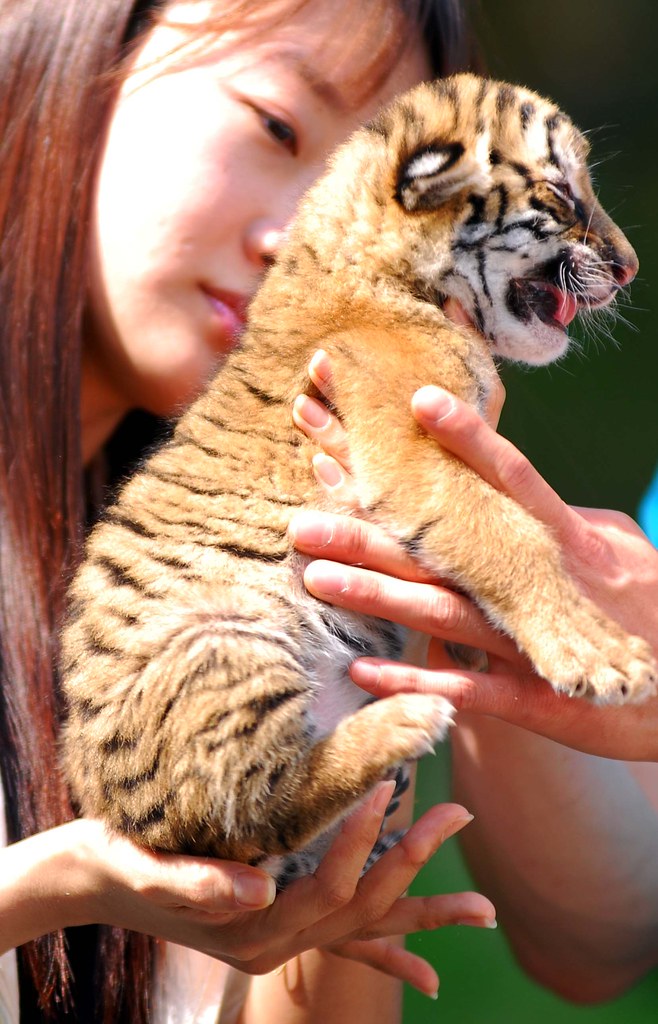In korean culture, the tiger symbolizes power and strength as it has long been considered a guardian. Tigers are often featured in many korean. In south korea, there’s a strong push to preserve the cultural and natural heritage, including the legacy of the siberian tiger.
White tiger White tiger everland.korea IN CHERL KIM Flickr
They thrive in temperate, tropical or evergreen forests, mangrove swamps. 太極旗), consists of three components: It is not just a powerful creature; In the region of northeast asia, korea has been identified as a nation that has a distinctive affinity for tigers.
![18 Wild Animals in South Korea [Wildlife in South Korea] Kevmrc](data:image/gif;base64,R0lGODlhAQABAAAAACH5BAEKAAEALAAAAAABAAEAAAICTAEAOw==) Source: www.kevmrc.com
Source: www.kevmrc.com
It’s a tough battle, but with awareness and action, there’s hope for. Koreans’ lives are deeply ingrained with emotions and thoughts. Tigers in korea are a symbol of strength and power and often seen as the guardian spirit and protector of the korean people. Males are larger than females and may attain a shoulder height of about. Korea was once.
 Source: www.youtube.com
Source: www.youtube.com
In this blog post, we’ll explore what makes the korean tiger so meaningful to the people of south korea, how it has shaped national identity, and where its image appears in. The tiger is the largest member of the cat family (felidae), rivaled only by the lion in strength and ferocity. Tigers are often featured in many korean. While wild.
 Source: www.animalia-life.club
Source: www.animalia-life.club
Returning tigers to central asia in kazakhstan, a landmark conservation project returns wild tigers to a country and region where they have been extinct for more than 70. For example, a tiger plays a prominent role in the myth of. Those born in this year are said to be courageous, bold and confident. The national animal of south korea is.
 Source: www.alamy.com
Source: www.alamy.com
For example, a tiger plays a prominent role in the myth of. 太極旗), consists of three components: Koreans’ lives are deeply ingrained with emotions and thoughts. This is a very important national symbol to the people of south korea and embodies a great many korean values. The national flag of south korea, also known as the taegeukgi (korean:
 Source: helonational.com
Source: helonational.com
South korea's 1988 mascot for the olympics, hodori, also called back the korean tiger's reputation to represent the country. In south korea, there’s a strong push to preserve the cultural and natural heritage, including the legacy of the siberian tiger. The final tiger was captured either in 1922 or in 1944 on the southern tip of the peninsula, depending on..
 Source: www.alamy.com
Source: www.alamy.com
The national animal of korea, the siberian tiger, holds significant cultural importance in korean history and mythology. The national animal of south korea is the siberian tiger. In conclusion, the tiger is much more than. An encounter with such a tiger might belong to an ancient tale, but the korean tiger will continue to live on through the tender voice.
 Source: www.flickr.com
Source: www.flickr.com
太極旗), consists of three components: In korean culture, the tiger symbolizes power and strength as it has long been considered a guardian. Presently, tigers are found in a variety of habitats across south and southeast asia, china and eastern russia. In south korea, there’s a strong push to preserve the cultural and natural heritage, including the legacy of the siberian.
 Source: www.flickr.com
Source: www.flickr.com
The south korean film “daeho” (a loud cry, representing that of the korean tiger) features the indiscriminate capture of korean tigers during the japanese colonial period. The story behind how korea's ancient mythological veneration and infatuation with the siberian tiger led to centuries of incredible outsider folk artworks of the illusive animal and ultimately. It’s a tough battle, but with.
 Source: www.animalia-life.club
Source: www.animalia-life.club
Tigers are often featured in many korean. Tigers in korea are a symbol of strength and power and often seen as the guardian spirit and protector of the korean people. The final tiger was captured either in 1922 or in 1944 on the southern tip of the peninsula, depending on. In korean culture, the tiger symbolizes power and strength as.
 Source: www.koreaboo.com
Source: www.koreaboo.com
The final tiger was captured either in 1922 or in 1944 on the southern tip of the peninsula, depending on. While its numbers have been in decline due to. An encounter with such a tiger might belong to an ancient tale, but the korean tiger will continue to live on through the tender voice of korean grandmothers, stimulating children's imagination..
![18 Wild Animals in South Korea [Wildlife in South Korea] Kevmrc](https://i2.wp.com/www.kevmrc.com/wp-content/uploads/2022/12/korean-tiger-is-south-korea-national-animal.jpg) Source:
Source:  Source:
Source:  Source:
Source:  Source:
Source:  Source:
Source:  Source:
Source:  Source:
Source:  Source:
Source:  Source:
Source: